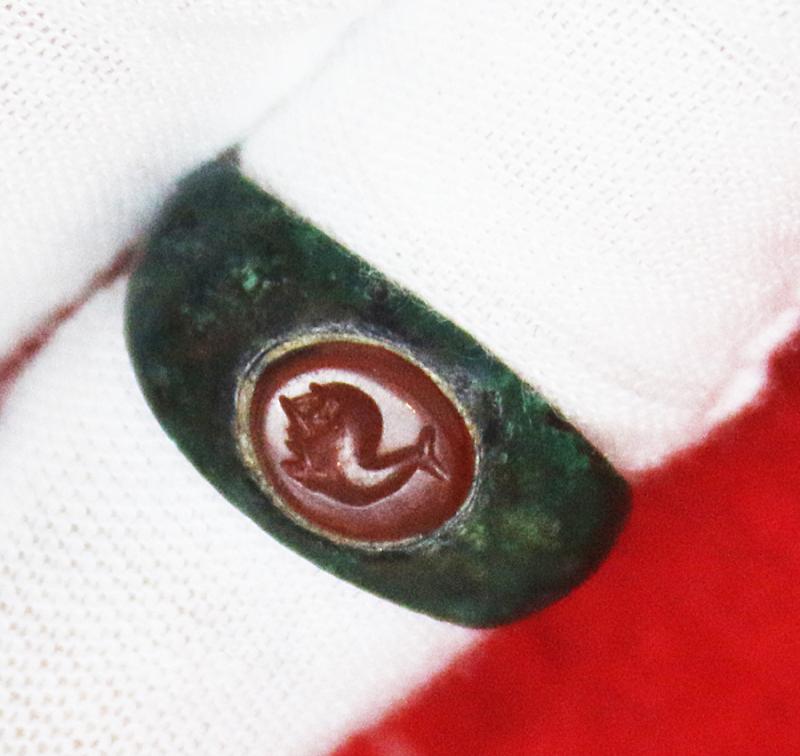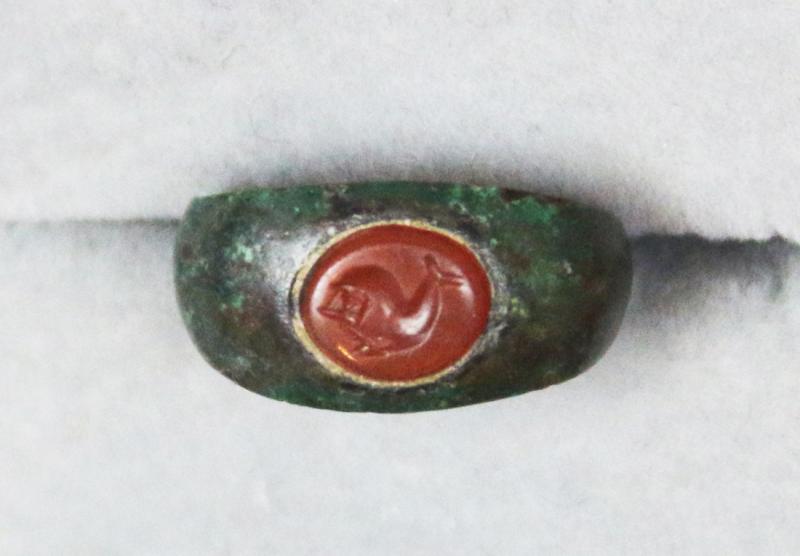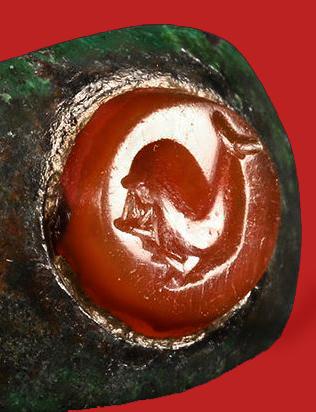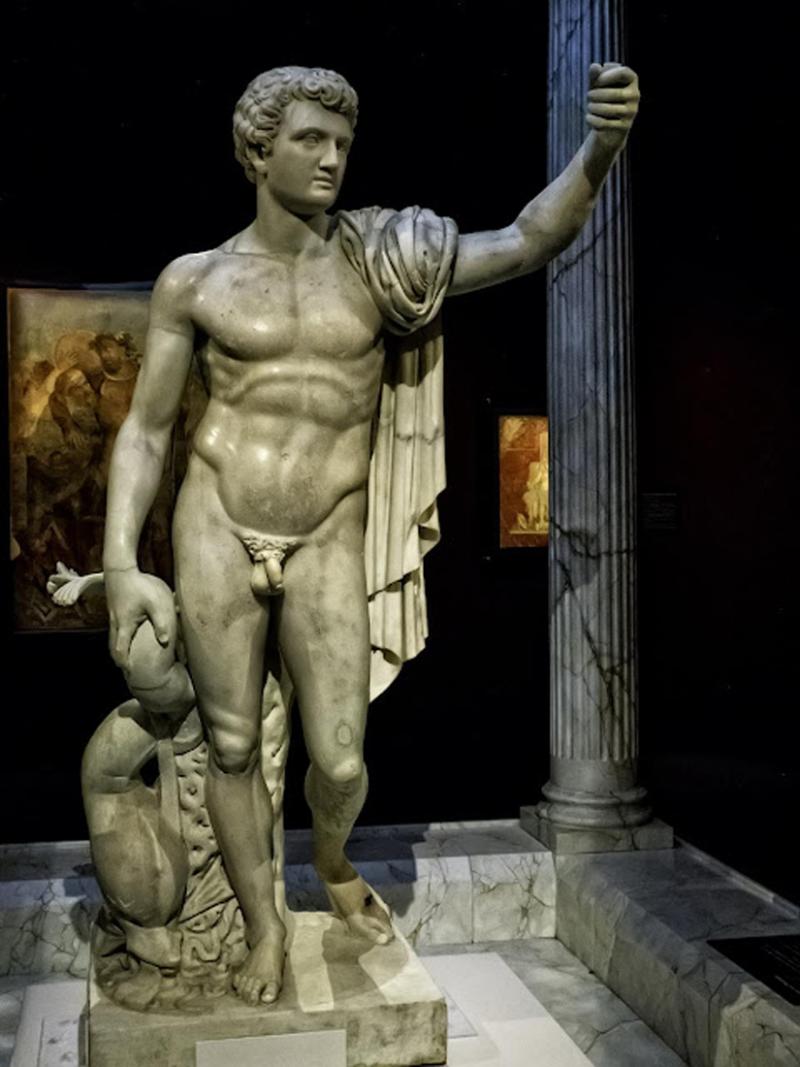An Absolutely Beautiful Original 2nd Century Imperial Roman Officer or Noble's Carved Intaglio, Carnelian Gem Stone, Status Seal Ring, Depicting a Dolphin. Originally Worn in the Roman Empire's of Trajan to Commodus
In Rosemary Sutcliff’s 'Eagle of the Ninth' series of books, a similar Dolphin ring was first owned by a Roman soldier and passed down the family over the centuries.
Made and worn during the reigns of;
Emperor Trajan
Emperor Hadrian
Emperor Marcus Aurelius
Emperor Lucius Aurelius Verus
Emperor Commodus Antoninus
The carvings on rings and seals are known as Intaglio, and a seal ring was part of Roman society for nobles, military officers and citizens. They were personal signets, and the more valuable were made from a small gemstone, with a design cut into the surface by skilled craftsmen, and usually set within a ring. They were used to seal important documents, and objects by making an impression on soft clay or wax. Wearing a carved carnelian signet ring immediately showed that you were of rank, and thus had status, wealth and influence. Some surviving rings have been found across Roman Britain, in towns and military sites alike, including two at the Waddon Hill former Roman military fort site..
Dolphins, like those seen on the Venus Mosaic found at Kingscote in Gloucestershire, are a fairly popular image in Roman art. They have a rich background in Greek and Roman mythology, literature, and folklore. They were often included in sculptures to improve the stability of the main figures!
Dolphins are featured in many Greek and Roman myths. Here, they are symbols of romance, illustrating the theme established by the depiction of Venus, the Roman Goddess of Love, in the central roundel of the mosaic. The presence of these dolphins alongside Venus also serves as a reminder of the myth that Venus was born from the sea, famously depicted in Botticelli’s late fifteenth century painting ‘The Birth of Venus’.
Their association with Venus is by no means their only significance in Greek and Roman mythology. In the sixth/seventh century B.C. ‘Homeric Hymns’, Dionysus, the Greek God of Wine and Theatre (who later became Bacchus in Roman mythology), was kidnapped by pirates. He turned into a lion to punish the kidnappers and, terrified, they jumped overboard. When they hit the water, Dionysus turned them into dolphins. The ‘Homeric Hymns’ also describe Apollo, a Greek and Roman God, turning into a dolphin to guide a ship into harbour. Another myth tells that Apollo’s son, Eikadios, was shipwrecked and carried to shore by a dolphin. This is one of many myths about dolphins rescuing drowming men, or bringing bodies back to shore for burial.
Dolphins are also often associated with minor sea deities. The Roman author Statius wrote in his first century A.D. epic poem ‘Achilleid’ that the sea-nymph Thetis rode a chariot through the sea that was pulled by two dolphins. Similarly, Philostratus’ ‘Imagines’describes a scene in which the one-eyed cyclops Polyphemus falls in love with the sea-nymph Galatea while she is riding four dolphins.
3/4 of an inch across.
Code: 24626
745.00 GBP







